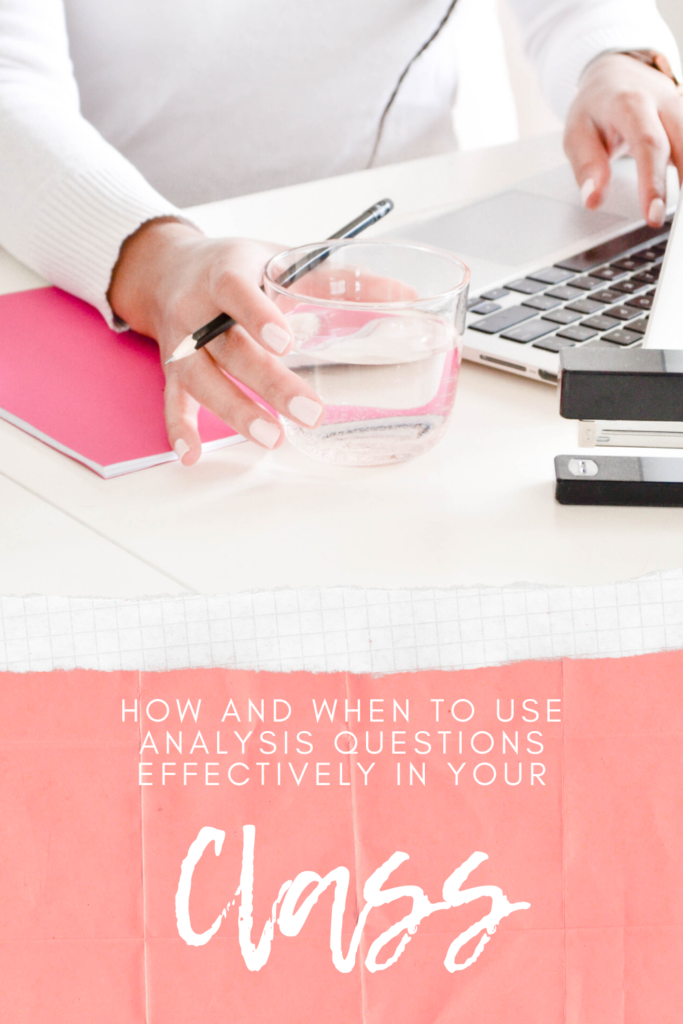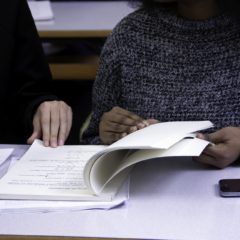
Are your students ready to perform well on standardized tests that question their analytical skills? We know that our students can answer the who, what, where, how, and why questions of a story, but can students compare/contrast, organize, assess, or examine a claim? During class discussions, I would play it safe and ask the four w’s and how questions. As time has evolved, so has my teaching, I have included more analysis questions. For example, with my career exploration classes, we were discussing using a planner to manage their time. Students completed a mock student’s monthly calendar. During our review, I asked, “What other way could you arrange the schedule? Why do you think that? Explain more. How do you prioritize the most important event? What if the student was part of a large family? How would that change the schedule?” Then I listened to the students, and I gave them wait time to think of an answer. Students were given time to construct or defend their generalizations. As a teacher, I understood that the questions I asked them required them to use their thought processing skills to classify and analyze errors in completing the assignment.
Marzano’s Taxonomy of Educational Objective third level is analysis, and it includes matching, classifying, analyzing errors, generalizing, and specifying. According to Marzano and Kendall, “Analysis also goes beyond the identification of essential versus nonessential characteristics that are a function of the process of comprehension” (44). In the past, students would memorize facts; today, the 21st-century student must explain why, draw conclusions, and examine claims. There are five mental processes of analysis. They are matching, classifying, analyzing errors, generalizing, and specifying. You may think matching is an easy skill until you compare and contrast two items. Identifying traits of an item take time and thought because you have to think about how the item compares and contrasts with another item. I used Marzano’s tool, the comparison matrix, and my students struggled with the concept of comparing/contrasting. I gave the students the opportunity to use the Venn diagram, and they performed better on it.

Classifying is identifying the superordinate and subordinate categories. We use this concept when creating an outline. One must identify the superordinate and subordinate to arrange the outline of a book or chapter. A teacher may ask, “How would you classify or rank this topic? How would you compare/contrast a topic?” The next topic is analyzing errors, which includes identifying errors. You may ask your students to critique an article, find misunderstandings within a passage, and explain why it is a misunderstanding. This is hard to accomplish because a student must have a basic understanding of a subject and sound judgments. Analyzing errors can be used when identifying an argument and a supporting claim. Generalization is another mental process that uses prior knowledge to create new conclusions on a topic. You can have students look for patterns within an article or subject or make a general statement that explains connections. The teacher may ask, “What conclusions can you draw? What evidence can you find?” to invoke generalizing. The last mental process in analysis is specifying. Specifying includes, “making and defending predictions about what might or will happen.” The student explains what will happen, the opposite of generalizing, which includes the student being familiar with the situation. Questions include, “What other way could you plan to use this article?” or “What would have to happened if…?” Students are using their predictions and speculating skills to answer these questions. All five mental processes create an environment where students are using their thinking skills to generate answers that explore their reasoning and logical abilities

Increasing the rigor within your discussions or assignments includes asking questions that analyze a student’s thinking. You may have students compare/contrast items (matching), organize items by the rank of importance (classifying), revise a paragraph or evaluate an argument (analyzing errors), create a statement that explains the patterns (generalizing), and defend a prediction that may or may not happen. Although basic recall questions such as the four w’s are needed and have a place within the classroom, analytical questioning is in higher demand in the education and workplace arenas. These questions take time to answer, are open-ended, and give a snapshot of how one thinks. I use analysis questions with all my classes every day because I know they will hear or see a question such as, “What conclusion can you draw?” or “What inference can you make?” Since I have been using more analysis questions within my lesson, I have witnessed students performing better and earning higher scores on summative assessments.
Do you use analysis questions within your class, and how do you incorporate them into your lessons? Let me know in the comment section.
Work Cited
Marzano, Robert J., and John S. Kendall. The New Taxonomy of Educational Objectives. Hawker Brownlow Education, 2007.




Leave a Reply